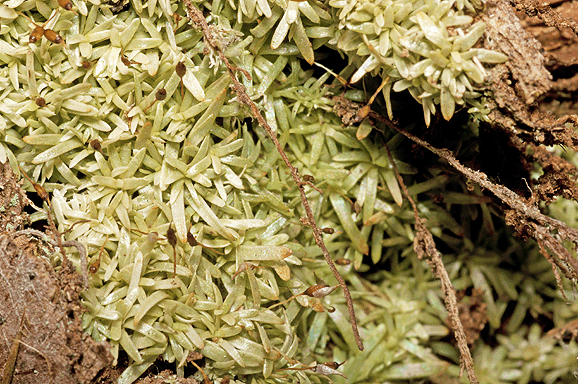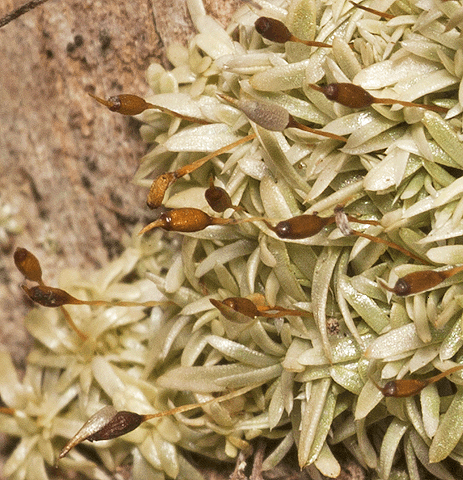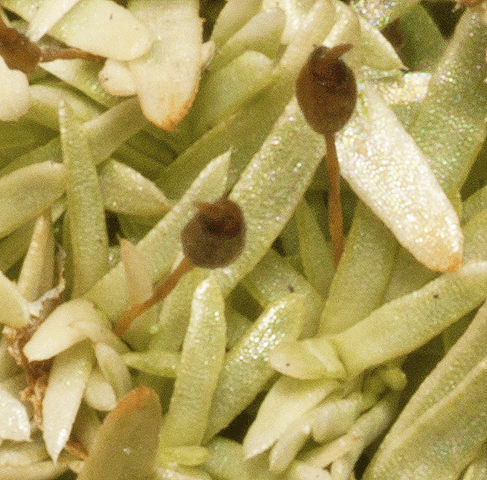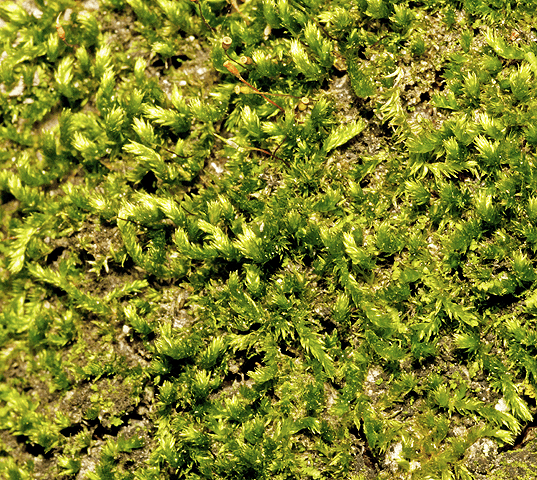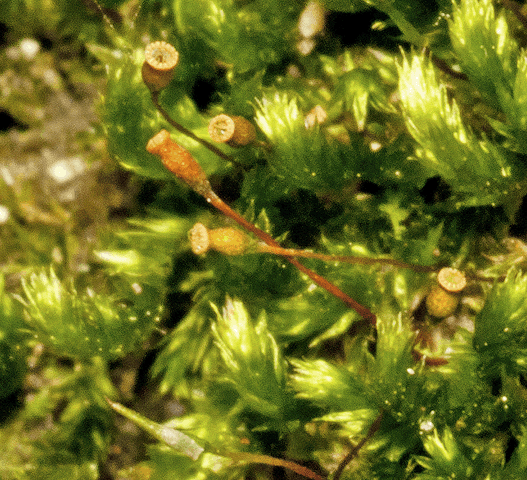Bryophytes (Mosses) in the Christopher B. Smith Preserve
Bryophyte Characteristics: Mosses have alternation of generation. The gametophyte generation is the stage with which we are most familiar. This stage has simple ribbed leaves covering thin stems. It lacks roots, but instead has threadlike multi-celled rhizoids that anchor it to the substrate. The gametophyte absorbs water and nutrients through its leaves. This stage is a soft plant, typically one to 10 cm tall. The sporophyte generation is much smaller and consists of spore-bearing capsules (sporangia) on top of long, unbranched thin stalks attached to the gametophyte. Mosses reproduce with the spores.
There are approximately 12,000 species of mosses in the world.
Interactions in the Smith Preserve: Some mosses are the first to colonize open ground. They play a major role in maintaining an ecosystem's humidity level because of their ability to absorb and store water. In addition, they help hold loose soil in place so other plants can begin to grow. And like other plants, bryophytes convert energy of sunlight to energy other organisms can use. The conversion process is photosynthesis. Energy that mosses create is distributed to animals through the food web. Also during photosynthesis, bryophytes produce oxygen. In addition, bryophytes provide habitat for other organisms.
Phylum |
Family |
Species Name |
Common Name |
Bryophyta |
Bryaceae |
Bryum argenteum |
|
Bryophyta |
Unknown |
Unknown |
Bryum argenteum Silver Moss
|
Unknown Species Name Unknown Common Name
|

